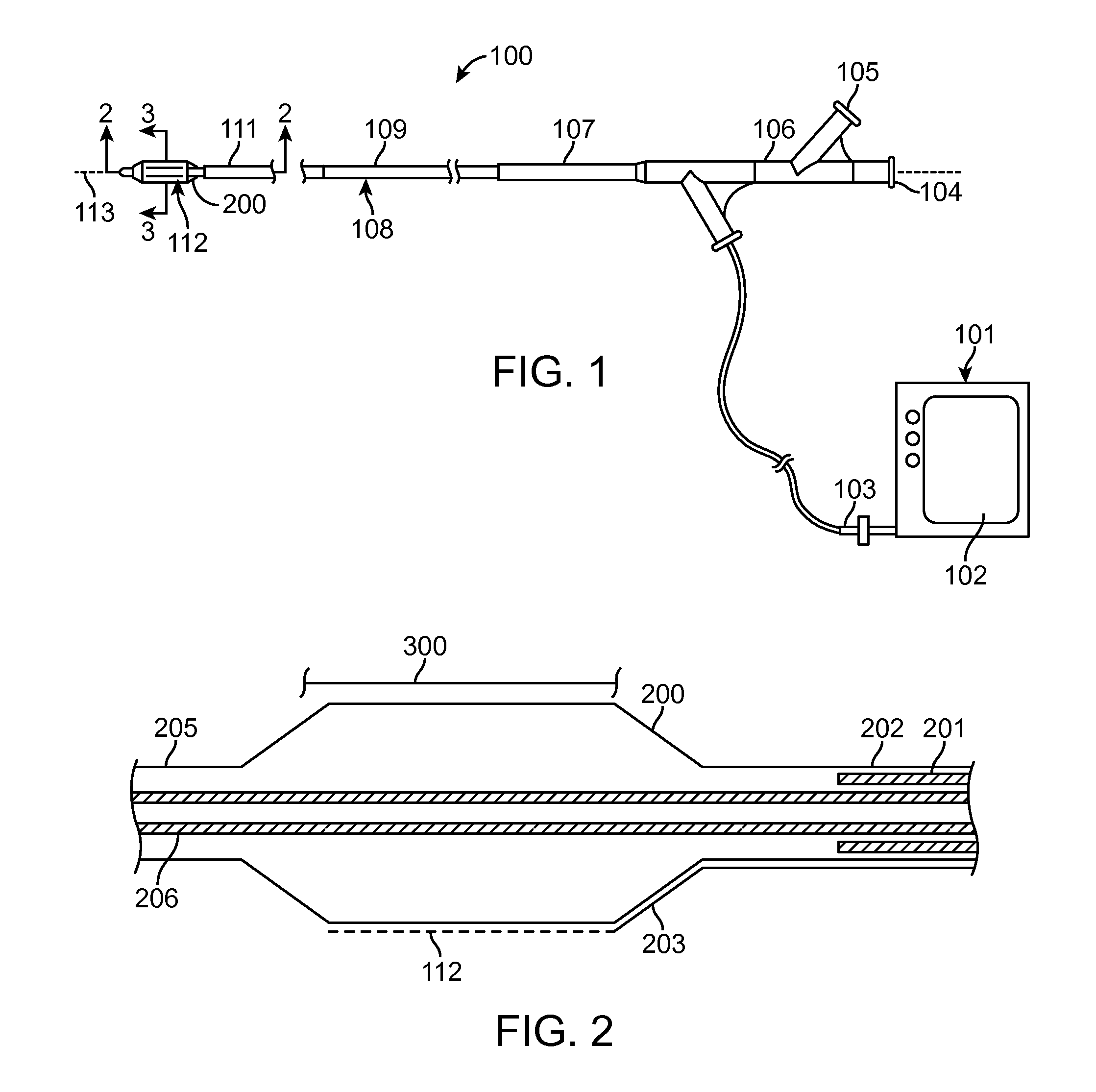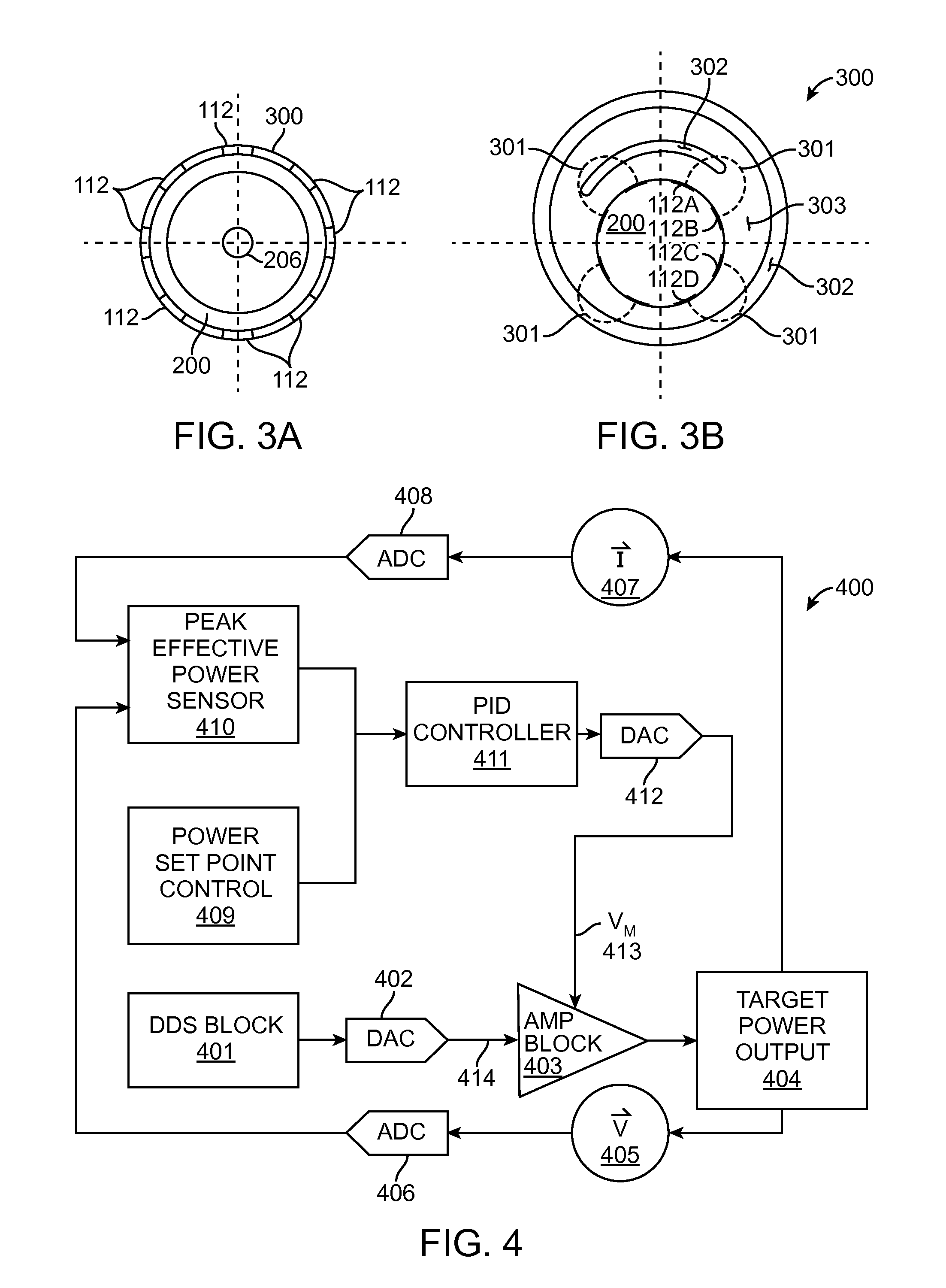Power generating and control apparatus for the treatment of tissue
a technology of power generation and control apparatus, applied in the field of medical devices, can solve the problems of inability to use stents or present significant disadvantages, implanting risks, and limited balloon dilation benefits, so as to accurately measure the impedance, accurately calculate the system impedance, and accurately characterize the contribution of impedan
- Summary
- Abstract
- Description
- Claims
- Application Information
AI Technical Summary
Benefits of technology
Problems solved by technology
Method used
Image
Examples
Embodiment Construction
[0047]Embodiments of the present invention relate to a power generating and control apparatus, often for the treatment of targeted tissue in order to achieve a therapeutic effect. Preferably, the target tissue is luminal tissue, which may further comprise diseased tissue such as that found in arterial disease.
[0048]While the disclosure focuses on the use of the technology in the vasculature, the technology would also be useful for other luminal obstructions. Other anatomical structures in which the present invention may be used are the esophagus, the oral cavity, the nasopharyngeal cavity, the auditory tube and tympanic cavity, the sinus of the brain, the arterial system, the venous system, the heart, the larynx, the trachea, the bronchus, the stomach, the duodenum, the ileum, the colon, the rectum, the bladder, the ureter, the ejaculatory duct, the vas deferens, the urethra, the uterine cavity, the vaginal canal, and the cervical canal.
[0049]Devices for heating tissue using RF, ult...
PUM
 Login to View More
Login to View More Abstract
Description
Claims
Application Information
 Login to View More
Login to View More - R&D
- Intellectual Property
- Life Sciences
- Materials
- Tech Scout
- Unparalleled Data Quality
- Higher Quality Content
- 60% Fewer Hallucinations
Browse by: Latest US Patents, China's latest patents, Technical Efficacy Thesaurus, Application Domain, Technology Topic, Popular Technical Reports.
© 2025 PatSnap. All rights reserved.Legal|Privacy policy|Modern Slavery Act Transparency Statement|Sitemap|About US| Contact US: help@patsnap.com



